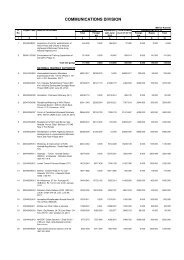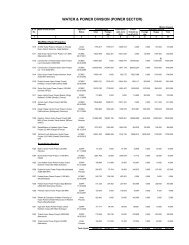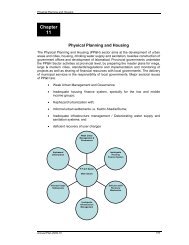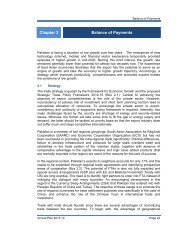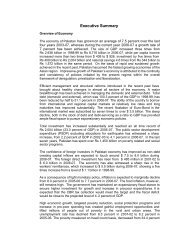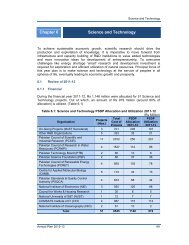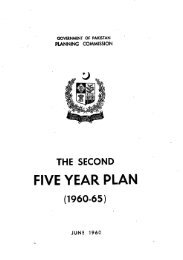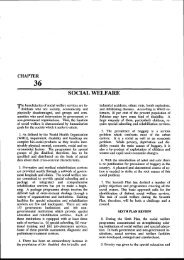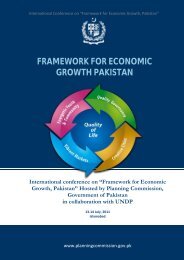Manual for Development Projects - Planning Commission
Manual for Development Projects - Planning Commission
Manual for Development Projects - Planning Commission
Create successful ePaper yourself
Turn your PDF publications into a flip-book with our unique Google optimized e-Paper software.
Chapter 5<br />
of values such as cash flow can exist only when at least one value is negative. Although IRR of different projects<br />
will vary, a project cannot with confidence be ranked on the basis of IRR. Only in a very general way will the IRR<br />
tell us that one project is better than another, in the sense that it contributes more to national income relative to<br />
resources used. If the discount rate remains 12%, we cannot know with certainty that the project with 25% return<br />
contributes relatively more to national income than the one with 15% return, and we cannot say with confidence<br />
that we should implement the project with 25% rate of return first. If we raise the opportunity cost (cut-off rate) to<br />
18%, then the project with 15% economic rate of return drops out of the investment net and judgement in favour<br />
of a 25% IRR project will be easy.<br />
5.10 One cannot simply choose that discount rate which will make the incremental net benefit-stream equal to<br />
zero. There is no <strong>for</strong>mula <strong>for</strong> finding the internal rate of return straightaway. We are <strong>for</strong>ced to resort to a<br />
systematic procedure of trial and error to find that discount rate which will make the net present worth of<br />
incremental net benefit-stream equal to zero. The most difficult aspect of the trial and error procedure is making<br />
the initial estimates. If the estimate is too far from the final result, then several trials will have to be made to find<br />
two rates close enough together to permit accurate interpolation (interpolation is the process of finding a desired<br />
value between two other values). In practice, it is better not to interpolate between intervals greater than about<br />
five percent because the wider intervals can easily introduce an interpolation error. The <strong>for</strong>mula of interpolation is<br />
given below:<br />
IRR =<br />
Lower<br />
the difference {Present worth of incre- }<br />
discount + Between two {mental net* benefits- }<br />
rates Discount rates {stream (cash flow) at }<br />
*Note that IRR can be calculated <strong>for</strong>m any point in time; all points will give the same returns.<br />
{the lower discount rate }<br />
{Sum of the present worth}<br />
{of incremental net bene-}<br />
{fit-streams (cash flows)}<br />
{at the two discount }<br />
{rates (signs ignored) }<br />
5.11 It may be noted that interpolation between discount rates that bracket the true internal rate of return always<br />
somewhat overstates the true return. This is because the technique assumes, as we move from one discount rate<br />
to another, that IRR will change following a straight line but the true value of IRR follows a concave curvilinear<br />
function.<br />
Net Benefit-Investment Ratio (NBIR) = (N/K Ratio)<br />
Page 10 of 24<br />
5.12 NBIR is simply the present worth of net benefits divided by the present worth of investment. To calculate this<br />
measure, simply divide the sum of the present worth after the incremental net benefits-stream has turned positive<br />
by the sum of the present worth of the negative incremental net benefits in the early years of the project. The<br />
reason <strong>for</strong> calculating the net benefit-investment ratio in this manner is that we are interested in an investment<br />
measure that selects projects on the basis of return to investment during the initial phases of a project. If the net<br />
benefit - investment ratio is 1 or greater, when we are discounting at the opportunity cost of capital, choose the<br />
project beginning with the largest ratio value and proceed until available investment funds are exhausted. It may<br />
be used to rank projects in those instances in which, <strong>for</strong> one reason or another, sufficient funds are not available<br />
http://hd2/pc/popup/ch5_p.html<br />
9/23/2010




